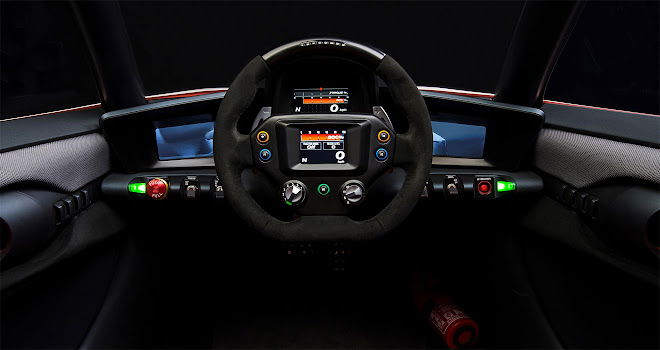Nissan has been dreaming up quirky electric concept cars for some time. Is it finally about to turn one into a product?
That’s the question begged by the latest Nissan BladeGlider, described as a “working prototype” and clearly drivable.

At least two functioning examples have been built by Nissan with help from Formula 1 offshoot Williams Advanced Engineering. One is being used to zip VIPs around at the Rio Olympic Games.
The new car has an unusual triangular theme, narrower at the front than at the rear, and with three seats in an arrowhead formation. There’s no roof though there are rollover hoops and bars, plus visor-like wraparound glazing. Entry is via dramatic, rear-hinged butterfly doors.

The seating layout is shared by very few other cars, most notably the McLaren F1 supercar, F1-designer Gordon Murray’s T25 and T27 prototypes, and the defunct Mia EV.
The central driving position creates a very focused cockpit, with twin digital instrument screens – one ahead of the driver and another embedded in the steering wheel. Monitors either side take the place of external mirrors, helping to reduce drag.

Nissan’s new prototypes are clearly related to an earlier Nissan BladeGlider concept from a couple of years ago, first exhibited at the 2013 Tokyo motor show. However, the new version is also noticeably different in design, execution and proportions.
The earlier concept used front-hinged doors, for example, its overall stance was more laid-back and its front axle was even narrower.

The wide-rear layout was evidently influenced by the arresting Nissan DeltaWing and ZEOD RC prototypes, which raced from the experimental Garage 56 slot at Le Mans in 2012 and 2014 respectively.
Despite looking as precarious as a racing Reliant Robin, the two Le Mans cars proved both quick and stable through corners, with their delta-shaped outline bringing both weight saving and aerodynamic advantages.

Other precursors include Nissan’s 2009 Land Glider concept, a narrow two-seat electric vehicle that could lean into corners, and the 2011 ESFlow, a sports car concept based on components from the Leaf electric car.
It’s unclear to what extent today’s BladeGlider is related to more modest electric cars. It certainly has more get up and go than a Leaf, with two 130kW motors, one for each rear wheel, compared to the Leaf’s single 80kW motor. The two prototypes can reach 62mph in under five seconds, according to Nissan, less than half the time needed by a Leaf. The two motors are used to actively stabilise the car by torque vectoring – separately adjusting the power sent to each rear wheel to counteract the onset of under- or over-steer in corners.

The capacity of the BladeGlider’s lithium-ion battery has not been revealed, nor its range between recharges. But it does have an active cooling system, making it more complex than the Leaf’s passive, air-cooled battery.
Will we see a production car resembling the BladeGlider in the future? Tesla demonstrated that there was an appetite for a compact electric sports car when it produced its original Roadster, but even it has moved on to bigger and more versatile vehicles – even if they are famously quick off the mark.
It would be fascinating to see Nissan take the plunge, but I won’t be holding my breath.




